The Defence Committee has been told that short-term pressures on U.S. and UK submarine fleets could complicate the delivery of AUKUS commitments, particularly the planned Submarine Rotational Force-West in Australia.
Giving evidence on 9 September, Dr Sidharth Kaushal of the Royal United Services Institute outlined the geopolitical trade-offs facing the trilateral pact.
He told MPs that “in the relatively short term, there are real geopolitical trade-offs that the pact, and meeting its terms, entails. Getting past that short-term period of uncertainty will be absolutely critical.”
Dr Kaushal highlighted the limits of U.S. capacity to operate in two major theatres simultaneously. In the Indo-Pacific, he noted, the U.S. faces China as “an economic peer and arguably an industrial superior” for the first time, while also confronting a “trough in capability” as older attack submarines are retired faster than new Virginias can be built.
For the UK, he said, this coincides with the strengthening of Russia’s Northern Fleet, including the growing availability of Yasen-class submarines. That development, he argued, will drive demand for Astute-class submarines in the Atlantic at the same time as London is expected to commit an Astute to the Indo-Pacific rotation.
“There will be serious questions, particularly given issues around the readiness of the UK’s SSN fleet, about whether a rotational deployment in the Indo-Pacific is viable,” he told MPs. Failure to deliver, he warned, could undermine AUKUS domestically in Australia, while success would represent a major draw on UK assets in the North Atlantic.
Committee member Fred Thomas MP raised the broader question of U.S. expectations, recalling that during a recent visit to Washington the Committee was told by Pentagon officials that the priority was for Britain to “take care of Europe and the High North.”
Dr Kaushal indicated his agreement, underlining the strategic dilemma facing the UK as it balances commitments under AUKUS with its role in countering Russian naval activity closer to home.


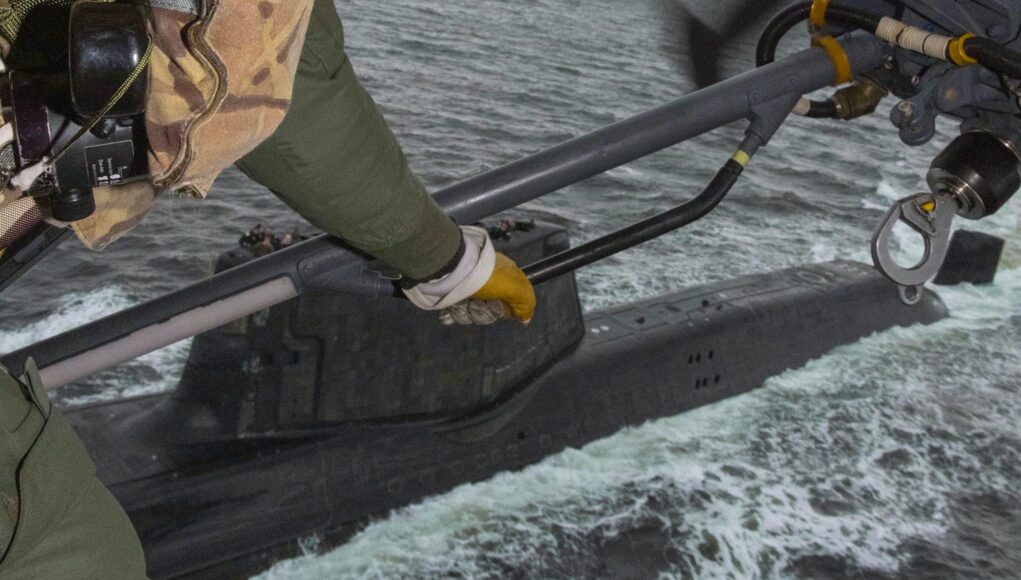


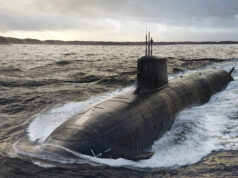

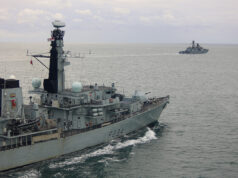
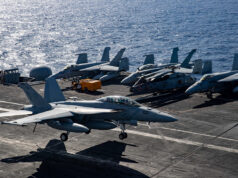
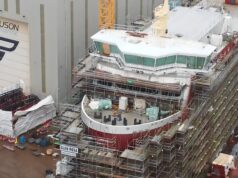

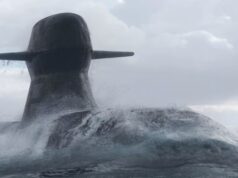
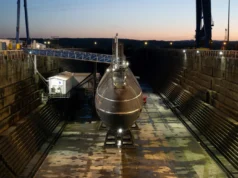

The slippage in Achillies commissioning date from late 2026 to 2028/29 will surely have a huge impact on our ability to deploy an A boats to SRF-West in 2027?
If we do manage to get one based out in AUS, that will have an impact on UKs ability to rotate its hulls to our main AOOs. Decades of stupid decision making is now at home and roosting.
Let’s hope we get a golden egg or two.
Even Agamemnon will not be operational until late 2026. So it would of been a stretch to fully crew Achillies by late 2026, even without the fire!
The whole Astute program is behind schedule!
Deep,
Agreed, RN continuing participation in SRF-West mission will probably be commensurately delayed, absent urgent mission dictate by HMG to RN. Possible/probably re-baseline of AUKUS Pillar1 by consultation and agreement of all parties, post Autumn release of USD for Policy (Elbridge Colby) report on AUKUS. Reasonably certain timelines and quantities will be revised to reflect current realities. 🤔
Was Achilles damaged in the Oct 2024 fire to such a degree that its schedule slipped 2 years? Was the cause of the fire still ruled accidental?
I have absolutely no idea, just joining the dots really, and might be well wide of the mark. However, there was a fire in the DDH and some months later Achilles commissioning date slips right by 2-3 years. One can draw whatever conclusions one wants at that, especially as there is no official reason why the commissioning was put back. The boat is built, all that’s left is/was the internal fitting out – a big task in itself. The previous boats didn’t require the extra 2-3 years. You choose.
Why the secrecy? If the fire was not caused by sabotage, should they not have had a final press release? Same for the Swindon fire.
Are they afraid to name culprits?
Again, absolutely no idea.
Just about everything that happens inside the assembly hall is classified for good reasons.
We have no need to know.
If it was sabotage, the public should be informed to create a more alert public mindset and to ask our dear leaders about their prevention plans. Swindon also only an accident?
The damage inside the building of course does not need to be made public.
I’m not sure they are afraid to name the culprits.. but the culprit was Russia and to formally accuse Russia of sabotaging our SSN programme and so by proxy our SSBN programme is tantamount to accusations that could be casus belli.
This is the problem is Russia now and has been crossing a line that everyone knew should not be crossed.. interference with a nuclear powers nuclear deterrent programme…by sabotage to the SSN and SSBN production site… to openly admit that would be potentially catastrophic, to not do anything about that would be potentially catastrophic.. personally I’m happy for HMG to be a bit vague and then do something suitably painful to Russia, but both be deniable and semi clear who did it…
Yes but Let’s be positive here.
Ermm,
Anyone got any positives ?
That’s me trying to be positive!!
One positive could be that posting one vessel to Western Australia with crews being flown out there for relatively short times with a reasonable amount of time ashore in Australia would give crews further incentives to be in submarines.
A two year deployment of a vessel would need say 8 crew rotations and allow two transit cruises and six patrol cruises. Getting to know and work with Australian crews is important so not every UK crew sent out need be a full crew as Australia will provide some crew as their experience develops. Plus my reading is that if we cover a year and a half on site it will be about 4 years till we need to go again.
Not really.
Well if the stories about Russian submarine Novorossiysk are true, we probably shouldn’t be too worried about their SSN fleet 😂
I have some!
Maybe the USA won’t try to leverage the program to extort as much as we expect?
Maybe it’ll just be a little bit adversarial behaviour, and not all practically hostile?
Maybe if we close our eyes tightly enough, we can forget how dependent our nuclear deterrence is on the same administration?
See? It’s not all bad.
Maybe Australia can help maintain the boat.
Honestly I don’t know why these “experts” bother. The main thing is the facilities are avilable in Western Australia. The Boats are always going to be subject to being deployed where they are needed.
We don’t have a lack of boats to achieve this we have a lack of facilities for maintenance.
Jim I can see why you never got the job at the MOD, far too logical in your thinking.
“To take care of Europe and the high nort”… even the US would struggle with that on their own.
“In the Indo-Pacific, he noted, the U.S. faces China as an economic peer and arguably an industrial superior”… has anyone told Trump that, surely the US is the hottest Country on the planet and no one else comes close and everyone agrees US weapons are by far the best in the World and no one else can compete. Now who’s right I wonder.
So, is this a crew rotation while the sub can be maintained in Australia, or is it an actual boat rotation? The reason I say that is that if they are doing it this way, there will be at least two boats away from the UK via the transit period. If you know what I mean.
I believe that the original idea was for the A boats to be based out in SRF-West for some 5-7 years as a married and accompanied draft for those on it. That saves on large amounts of ‘core’ life by constantly sending a boat all the way there, staying for 9 odd months and then returning to the UK.
This constant deployment cycle over long distances will seriously eat into core life. This is essentially what killed the S & T boats in the late 90s to 2010.
That’s what I suspected. Thanks.
Transits via UKCSG visits?
Realistically the chance of the U.S. being able to supply any Virginia class boats (even older already in service boats) to Australia is rapidly receding to zero given the strategic demands on the USN fleet, the slow build rate of U.S. shipyards and their maintenance backlog. The current Pentagon review of AUKUS commitments is only likely to confirm this.
The best way to save the AUKUS pact, meet Australia’s looming capability gap with the ageing Collins class, and save face for the U.S. is to redefine the AUKUS Pillar 1 (submarine program) as two phases: Phase 1 near term replacement for Collins; and Phase 2 long term construction of new common AUKUS boat design for RN/RAN/ USN
Remove the agreement for the USN to supply Virginia boats and instead commission the building of at least 4 Japanese Taigei class conventional submarines (with options for 2 more) to be built in Japanese shipyards (following on from the Mogami frigate deal)
This provides the RAN with replacements in a shorter timeframe (the Japanese yards are turning them out at a rate almost as fast as the Chinese and it’s a live production line)
The Taigei are arguably the most capable conventional submarine with lithium ion batteries able to stay submerged for up to three weeks and a range just shy of Collins
It will give Australia more time to develop the industrial base needed for nuclear powered boat construction, save significant taxpayer funds both for acquisition and operations (smaller crews) and provide a better transition to a future nuclear fleet
The RAN would remain committed to the AUKUS boat but ultimately operate a two tier mixed fleet of conventional and nuclear submarines
There are also operational benefits to a mixed conventional and nuclear fleet. While nuclear boats have a distinct advantage in deep open waters, conventional boats are arguably more effective in littoral and shallow waters (which includes a large part of the SCS)
Ultimately a common AUKUS nuke design being built in three countries shipyards provides a better chance of being able to coming closer to matching China’s rate of submarine production so there are still significant reasons for the U.S. to remain committed to AUKUS over the long haul
If an interim is needed, refueled and refitted T-boats or 688’s in Australia is an option. It would be expensive and very short term (5 years service life?) but a true stop gap compromise. It would also get Australian yards ready for handling nuclear materials, which isnt a small task.
It should be noted that Chinese SSN’s are considered very crude and loud, inferior to what the Soviets were building in the 80’s.
Chris.. considered in the past tense.. the T93Bs are apart from having a twin reactor consider probability on a par with last generation western SSNs and russian SSNs.. the T95 that is now being built has every indication and reason to be believed to be the peer or close peer of present generation Western SSNs.
Sure let’s piss away some more Australian taxpayers dollars to get a decommissioned Cold War era platform back in the water for a couple of years.
A Collins class SSK (running under batteries) has a lower acoustic signature than a Triumph SSN. The Collins class has ‘sunk’ both Virginia and Los Angeles class boats in training exercises (the exchange rate with LA class was around 1:1). The Taigei class are likely to be even more effective.
There are some real strategic and tactical advantages in operating a mixed SSK and SSN fleet – with some commentators on this site calling for the RN to consider acquiring SSKs to bolster fleet numbers. SSKs are an order of magnitude to more cost effective to acquire and operate.
As for ‘handling nuclear materials’ both Sterling on the west coast and Brisbane on the east coast routinely handle port visits by USN SSNs.
Acquiring new build cutting edge SSKs from Japan would not prevent the ongoing development of HMAS Sterling as a SSN maintenance base, continuing the trading of RAN submariners through nuclear engineering courses (already under way) and cross decking RAN crews on RN/ USN boats.
The AUKUS boats will have sealed reactors which won’t be accessed in Australia during the life of type and won’t require direct handling of fissile material. Delaying the acquisition of SSNs actually gives Australia more time to put in place the regulatory framework and safety procedures and get up to speed on SSNs.
Instead of putting all Australia’s eggs in the SSN basket, the RAN could adopt a three tier approach and have one of the most versatile and effective submersible fleets with 30 plus autonomous Ghost Shark XLAUVs, 4 plus lithium ion battery powered SSKs and 4 plus AUKUS SSNs.
It sort of depends what Australia wants to do SSKs are fine defensive and area denial platforms, they are poor offensive platforms. That is why China is now spending a vast fortune on serial production of SSNs.. when historically it could not be arsed with them.
Australia may not realistically have a choice. If the Pentagon review rules out supplying any Virginia class to the RAN and assuming the commitment for Australia to acquire the common USN/RN/RAN AUKUS design is honoured, they won’t realistically be in RAN service until the late 2030s possibly early 2040s.
The Collins, even with a LEP, won’t be able to remain in service opening up the capability gap that the Virginia acquisition through AUKUS was meant to solve after the French Barracuda debacle.
There isn’t the time (nor inclination) nor does it make sense to open up an SSK production line in Australia. The only sensible alternative would be an off the shelf SSK design and the Mogami deal opens the way for the Japanese who have arguably the best SSK tech and fastest, cost effective production line.
The rapid acquisition of the Ghost Shark XLAUV in significant numbers is also a hedge against this outcome but while autonomous platforms open up some interesting tactical and strategic options they are complementary and not a substitute for a crewed SSK or full fat SSN.
Which debacle ?
Refuel and Refit a T class, they were all pretty well knackered as they’d been flogged to death for far longer than their planned service life. I know nothing about the hulls but good luck on refuelling a PWR1 reactor. 😖
Producing the Fuel elements would be like asking BMW to pause building the Modern Mini and reconfigure Cowley to build a single Mini Clubman Estate complete with “A” series engine. One of the reasons for all the investment going into the RR plant on Raynesway is so the old PWR1 / PWR2 fissile pant can be enlarged and modernised for a larger volume of PWR3 required.
If it was in anyway possible to practically refuel the remaining LA class boats and keep them running safely the USN would do so in a heartbeat.. there SSN fleet is a a proper state. They are heading to a 43 boat fleet down from the hard requirement for 66 boats and it’s going to take them probably into the 2050s to get back to 66 boats.
Dr. Kaushal is a brilliant promoter of the MI complex, but he must figure out that there is no such Indo Pacific ocean. So, don’t try to con me if you write about fictitious bodies of ocean. Lie to me to get more tax money for more dire threats and never ending security issues but don’t lie about non such oceans.
The only belligerent President in the world is the braggadocious Orange Narcissist, while the meek President Xi constantly advocates for sharing, multi-lateralism, common prosperity— all of which will never produce billionaires. And that is the problem for American capitalism. UK National Debt is only £2 trillion, 96% of GDP, so, room for the military to spend. UK 30 y bonds now 5.57%, US at 4.75%. Spend! Spend! Spend!
The French at least own a operational real industrial nuke and military reality. Not a rusty docked fleet leaking into Harbor. The australian made thier choice. Lol